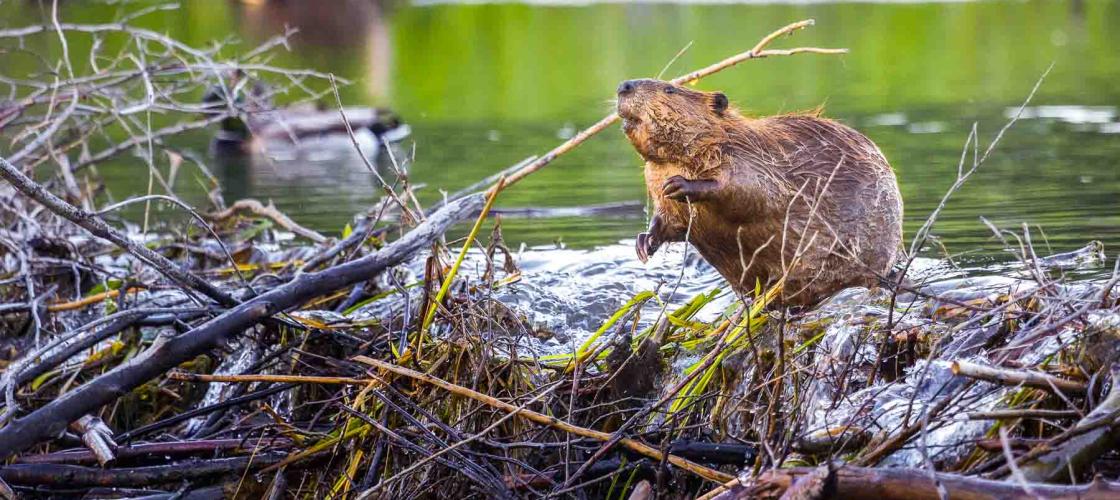
Some critters don’t have a home. They simply wander around and wherever they stop, that’s where they sleep. Others — the ones this story is about — build impressive shelters in which to rest or raise a family. Even without boards or blueprints, these master builders finish the job just fine.
Pileated Woodpecker
Rat-a-tap-tap! A woodpecker’s handiest tool is its beak. It isn’t sharp and pointy. If it were, it would get stuck a lot. Instead, the beak is shaped like a chisel, which is perfect for chipping away at wood.
Woodpeckers raise their babies in holes they hammer into trees. When excavating a nest, the head-banging birds search for soft wood that is already dead or rotting. This way, their cavity creation doesn’t harm the tree.
When the woodpecker family moves out, other critters move in. Squirrels, bats, screech-owls, wood ducks, and bluebirds are just a few of the animals that make their homes in abandoned woodpecker holes.
American Beaver
When it comes to critter construction, beavers are in a league of their own. With sticks, stones, and mud, the buck-toothed builders fashion dens and dams. Building is a family business. Mom, pop, and the kids all work together on projects.
Using only its teeth, a beaver can cut down a tree that’s thicker than your thigh in under 5 minutes. Once a tree has been dropped, the family nips off the branches and begins stacking them across a stream. They use rocks to hold the branches down and handfuls of mud to plug holes.
Eventually, water pools behind the dam and forms a wetland. The new habitat soon hums with life as ducks, herons, and muskrats move in.
When the pool is deep enough, the family starts working on a den. They pile branches into a large mound, then dig doorways and a living chamber inside. Mud holds the branches together and keeps the den draft-free. The walls of the house are about 2 feet thick — enough to keep the family safe and cozy.
Mud Dauber
This wasp isn’t making mud balls to play buzzketball. She’s gathering building supplies for a nursery.
The wasp, known as a mud dauber, flies balls of mud, one by one, back to where she wants to build a nest. There, on the side of a building, cave, or cliff, she molds the mud into hollow tubes. Once she finishes a tube, she catches small spiders and stuffs them inside. Each spider gets stung so it can’t move.
The mama wasp lays an egg in each tube and seals it up with a door made of mud. When the egg hatches, the baby wasp will have a pile of stunned spiders to eat and a safe, cozy nursery in which to grow.
Ruby-Throated Hummingbird
It takes tons of work to build a home, and mama hummingbirds do it without any help from their mates. A mother hummer begins by weaving a cozy, cup-shaped nest out of thistles, cattails, and dandelion fluff. To anchor the nest to a branch and hold the whole thing together, she collects silk from spider webs. To hide the nest from predators, she sticks moss and lichens to the sides.
When the nest is finished, it’s about the same size as a large sewing thimble. There’s hardly enough room for both of her babies! Luckily, spider silk stitched into the nest allows the sides to stretch as the baby hummers grow.
Yellow Garden Spider
Like eight-legged anglers, yellow garden spiders weave silken nets to catch airborne insects. The spider hangs in the center of its web, waiting patiently for bugs to fly by. When the spider feels the web quiver, it knows dinner has arrived.
Spinning a web is a never-ending job. Garden spiders eat their webs each night and re-spin new ones before dawn. This isn’t an easy feat. Large webs may contain nearly 60 feet of silk!
The silk is tiny but tough. A single strand long enough to circle the Earth would weigh less than two pounds. Ounce for ounce, however, spider silk is nearly as strong as steel.
Cliff Swallow
Cliff swallows gather mouthfuls of mud — but not to eat. (That would be gross.) They use their beaks to mold the mud into pea-sized pellets. Then they fly away and stick the pellets onto the side of a bluff, bridge, or barn.
Blob by blob, the winged workers build a volcano-shaped nest in which to raise their babies. It takes about 1,000 pellets — and 1,000 trips to the mudhole — to finish their home.
Cliff swallows like to nest with lots of neighbors nearby. In fact, it’s not unusual for several hundred — or even several thousand — nests to be crowded together on a single bluff or bridge!
Bald Eagle
Bald eagles build some of the largest nests of any bird. They’re usually about 6 feet wide and 3 feet tall, but they can get much larger.
When a young eagle couple wants to start a family, their first nest is relatively small. But each year, rather than building a new nest from scratch, the couple simply add more sticks to their existing structure. Over time, the sticks pile higher, and their nest becomes a ginormous mansion of branches.
An eagle nest in Florida measured 10 feet across and 20 feet deep. One in Ohio was used for 34 years.
When the tree it was in finally fell down, the nest weighed more than 4,000 pounds!
Caddisfly
Pick up some rocks from nearly any Ozark stream and — if you know what to look for — you’ll probably find a caddisfly or two.
Caddisfly babies, or larvae, are titans of tiny home construction. They piece together pebbles, sand, and leaves to fashion funky, tube-shaped homes. Some caddisflies anchor their homes to rocks. Others wear their homes like a shell as they crawl along the bottom of a stream.
The home offers camouflage, protects the baby’s squishy belly, and adds weight so the little insect isn’t swept away by swift currents. Caddisfly larvae live in their cases until they swim to the surface and turn into air-breathing, moth-like adults.
Devil Crayfish
Crayfish need water to breathe, but not all of them live in streams. Some, like this devil crayfish, burrow down to find water underground.
This tiny tower of mud is the front door to a devil crayfish’s house. As it digs, the crayfish uses its legs and mouthparts to roll mud into tiny blobs. It carries the blobs to the surface and stacks them up to form small towers, which are called chimneys.
Although most burrows go only a few feet underground, crayfish can be exceptional excavators. Some tunnels, particularly in dry areas, may run more than 15 feet deep!
Spittlebug
Forget sticks, stones, and mud. Some critters make their own building materials.
Baby spittlebugs suck sap from plants and turn it into bubbly, spit-like foam. The bugs snuggle inside the slobber, which protects them from predators and parasites. It also keeps them cool when it’s hot and damp when it’s dry. Although the foam looks like spit, it’s not. It actually comes from the spittlebug’s other end.
From these humble beginnings, spittlebugs — also called froghoppers — grow into the high-jump champions of the animal kingdom. The quarter-inch insects can skyrocket 27 inches into the air. Though a few inches doesn’t sound impressive, consider this: A human-sized spittlebug could easily hop over a 60-story skyscraper!
Baltimore Oriole
Female orioles are nature’s knitters. They weave hanging, sock-like nests that dangle dangerously from the outermost branches of trees. Biologists believe this protects the nests from chubby raccoons and egg-eating snakes.
It takes a week or two to build a nest. First the female gathers construction materials: strips of grasses, vines, and other plant fibers, hair, twine, even fishing line. Next, she twists long fibers around a branch to create support strands for the rest of the nest. Then she uses her pointy beak to weave other fibers in and out of the anchor lines until a pouch is formed. Last, she lines the nest with cattail fluff and downy feathers to cushion the eggs. Though the nest looks flimsy and delicate, it can cradle a mama bird and up to seven eggs.
Woodchuck
Woodchucks — aka groundhogs — are better than bulldozers when it comes to pushing dirt around. These chonky members of the squirrel family dig a network of tunnels and underground chambers in which to hide, hibernate, and raise their babies.
The tunnels may stretch nearly 80 feet long. During extensive excavations, a woodchuck can remove 700 pounds of soil! Woodchucks are so good at digging, they can even close their ears to keep out dirt.
When woodchucks move out of their burrows, other animals move in. Foxes, weasels, badgers, skunks, rabbits, and opossums all take shelter in woodachuck burrows — sometimes while the woodchuck is still living there.
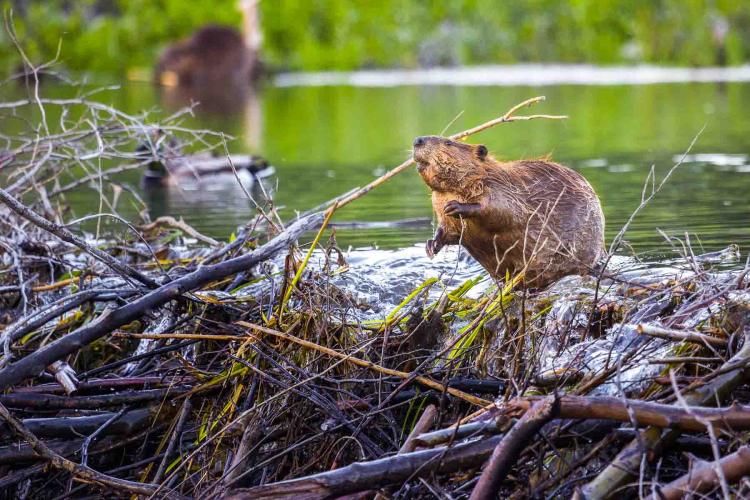
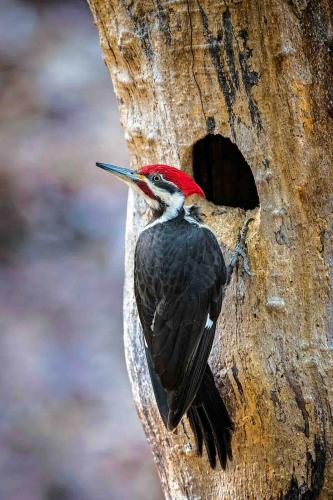
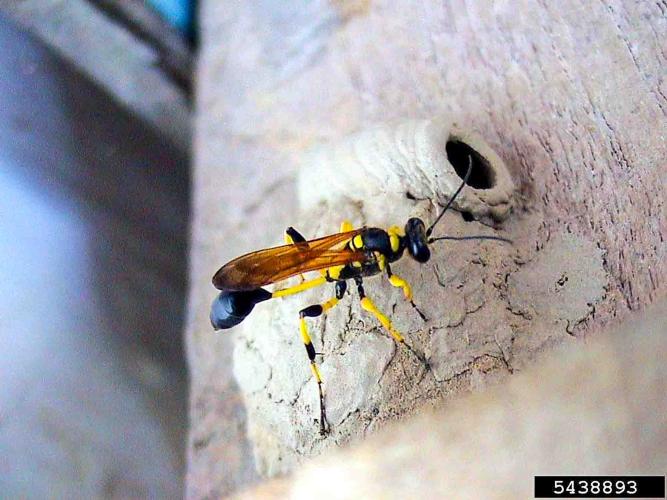
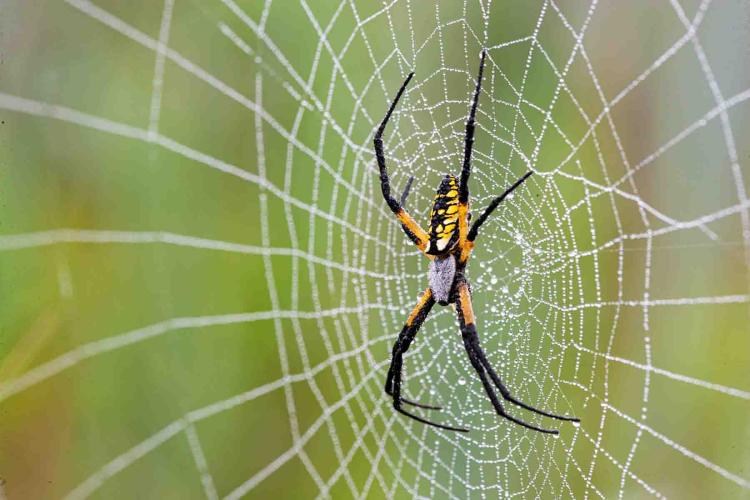
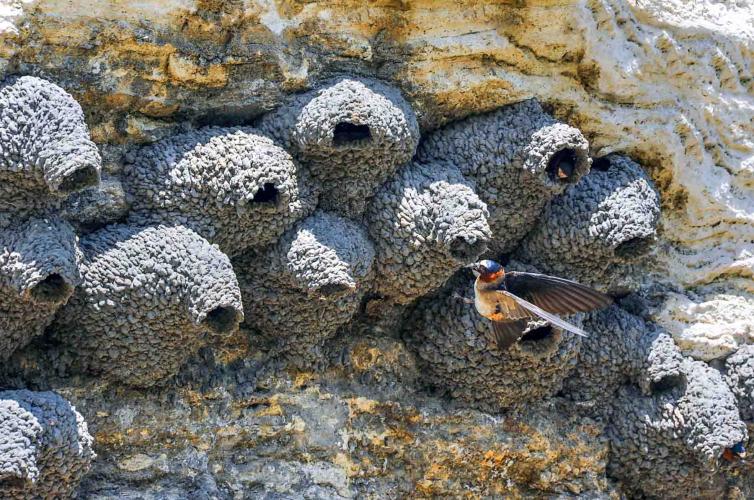
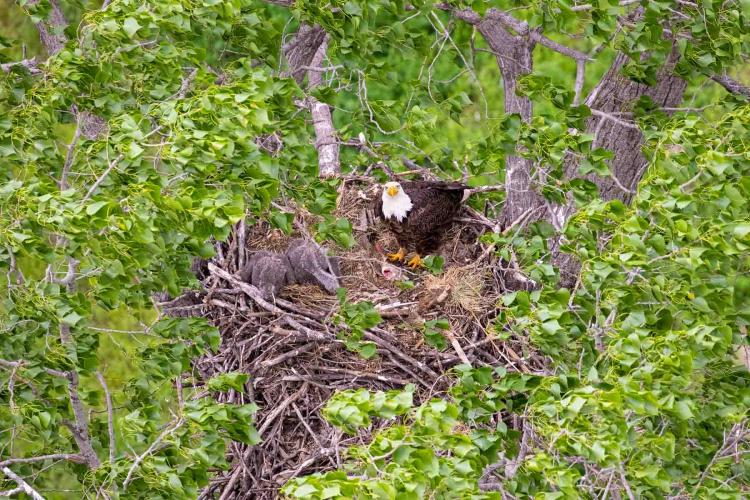
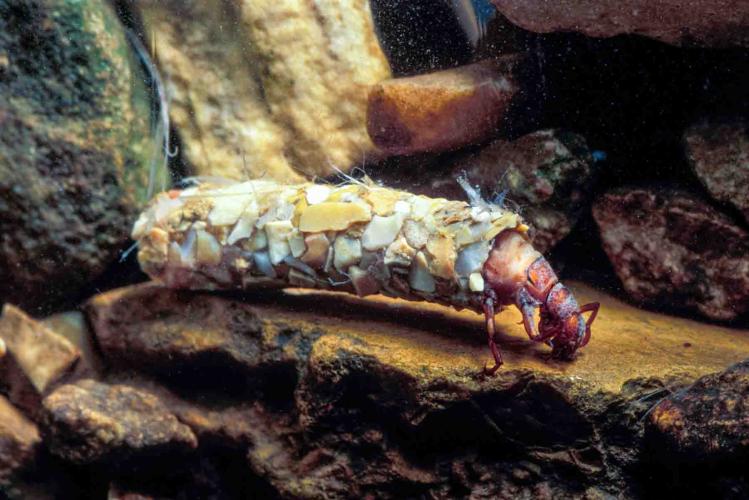
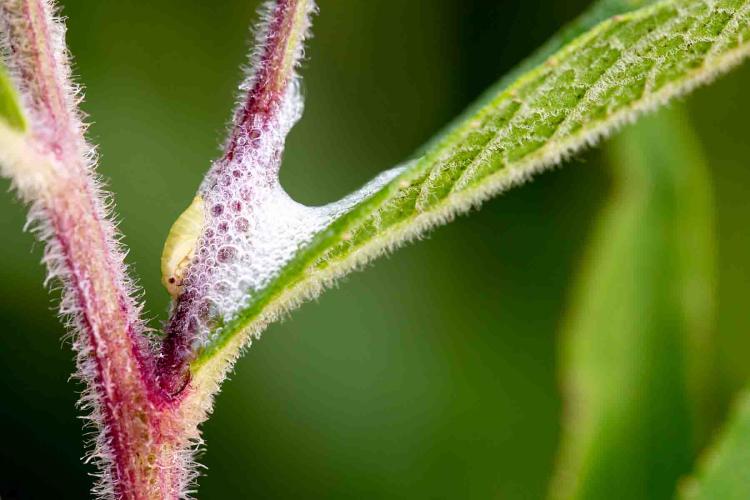
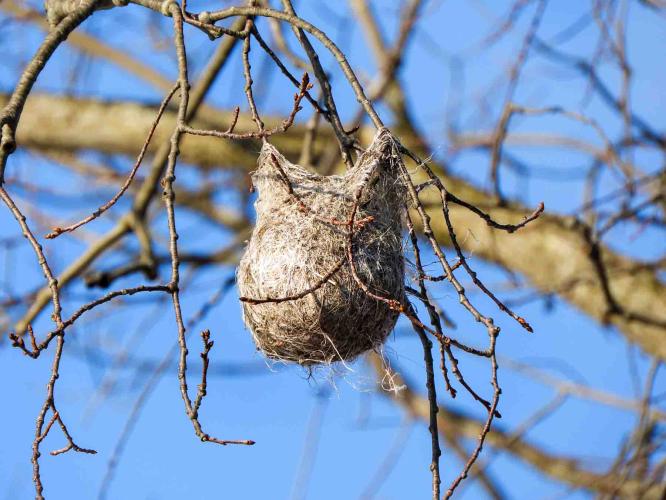
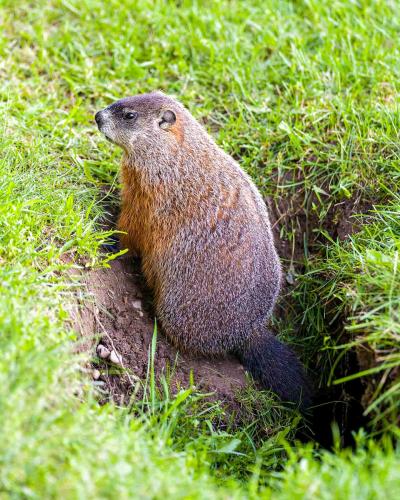
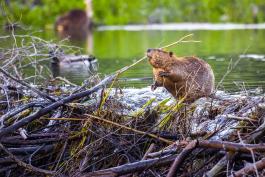
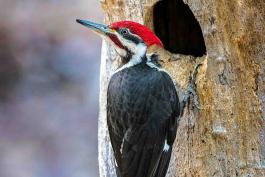
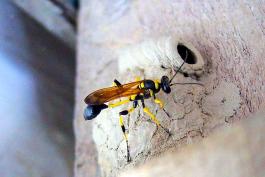

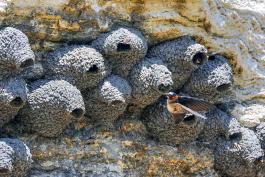
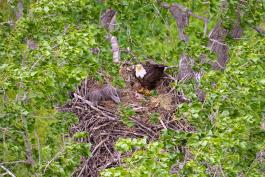
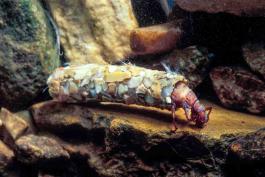


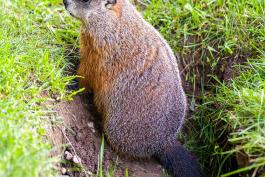
Also In This Issue
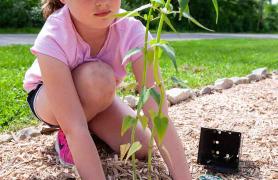
Fuzzy, buzzy, hard-working, and helpful, bumblebees are the superstars of flower farming.
And More...
This Issue's Staff
Photographer – David Stonner
Designer – Marci Porter
Designer – Les Fortenberry
Art Director – Cliff White
Editor – Matt Seek
Subscriptions – Laura Scheuler
Magazine Manager – Stephanie Thurber






















